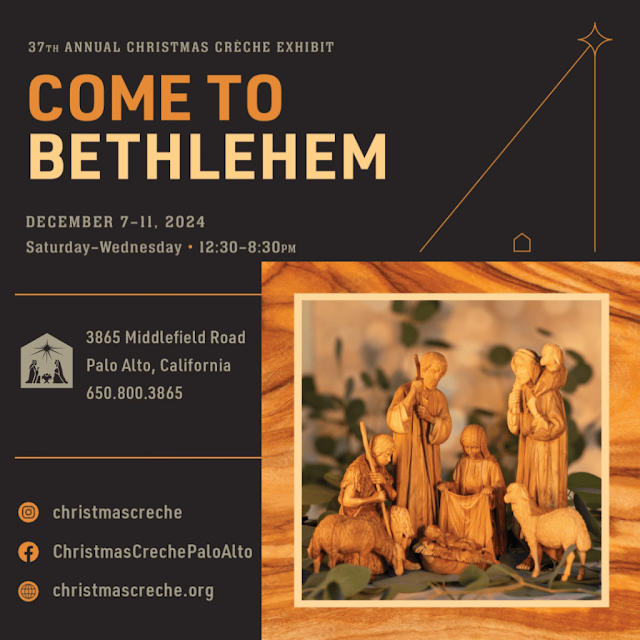Christmas 2024.....I hope you had a very MERRY Christmas and will have a peaceful, happy New Year!!!!
Simon accompanies his stake choir in a Christmas fireside
The Taylor family and a few extended family gather at the SLC airport to welcome home Kelly Taylor from her 18 month Iowa City, Iowa, Swahili-speaking mission for the Church of Jesus Christ of Latter-day Saints. A joyous reunion! Here she comes!
The Taylor family is once again complete!

Return missionaries are announced with banners wrapped around the round-about by our nearby chapel.
A nativity puzzle, amaryllis, narcissus, tree, lights and lots of creches
Gae Rose and I and many friends and neighbors enjoyed a nice dessert gathering and piano Christmas music by Tommy Shallenberger, hosted by Ramona Miller (left). Below: Kathleen Ianziti, Gae and Kristin Rose, Rheonda, Ramona and her granddaughters, Miriam*********My annual Christmas holiday party (begun 52 years ago) often brings wonderful friends, including Kim Johnson, who served as a young missionary in Madrid at the same time as I in 2012-3. Marc & Kelly Bonham, Marian Taylor, Christel and Roland Hart, Emily. Below, Joy and David Atkinson (we served in the DR together)
George Taylor, Suzanne and Doug Harwood, Glenna, Kari, and Bob Hammond, friendships made in California
While the Provo Temple is being rebuilt, I attend either Timpanogos, Orem, or Provo City Center Temple*********
Christmas Eve at the Taylors with family and friends: 2 sisters, Anna and Alida (Emily met in her work at UVU) from Republic of Congo, attending college in Utah. The rest of the family live in Kentucky
The teens and kids (above, Evie and Hannah)put on a wonderful Christmas pageant for us. Kelly directed, Lucie did costumes.
Ken is not only a great chef but bunny-sitting cuddler!
 And this is our relaxed singing after our Christmas dinner!
And this is our relaxed singing after our Christmas dinner!
We are pleased that Schweinitz and other Moravian ancestors' were honored as Bethlehem, PA (founded in 1741) became officially a UNESCO site on December 27, 2024.

Watch the Press ConferenceBethlehem’s Moravian settlements became the 26th UNESCO World Heritage Site in the United States at an official inscription ceremony Thursday at Moravian University.The vote by the World Heritage Committee to recognize the settlements was July 26 in New Delhi, India, but Thursday’s ceremony made the designation official. Twenty-six also happens to be the number of points on the Moravian star, a traditional symbol of the Moravian Church and heritage. for everything Moravian community.”The Bethlehem settlements were nominated with sites in Gracehill, Northern Ireland; Hernnhut, Germany; and Christiansfeld, Denmark, as a single World Heritage Site representing the Moravian Church’s historical value.The Bethlehem site spans 10 acres in downtown Bethlehem and includes nine structures, four ruins and God’s Acre cemetery. The oldest Bethlehem structures date to 1741.It’s a significant milestone both for Bethlehem and the United States – it is the first transnational World Bethlehem’s sites along with the three in Europe (in N. Ireland, Denmark, and Herrnhut, Germany) share similar qualities like architecture and village structure with a town square.All four sites still have active church congregations that date back centuries.
Bethlehem’s Moravian sites are historically significant for several reasons – the Gemeinhaus home is the Moravian Museum of Bethlehem, is the largest 18th-century log structure in continuous use in the United States. The 1762 Waterworks, in the Colonial Industrial Quarter, operated until the 1830s and is the first municipal water pump system in the United States.































































